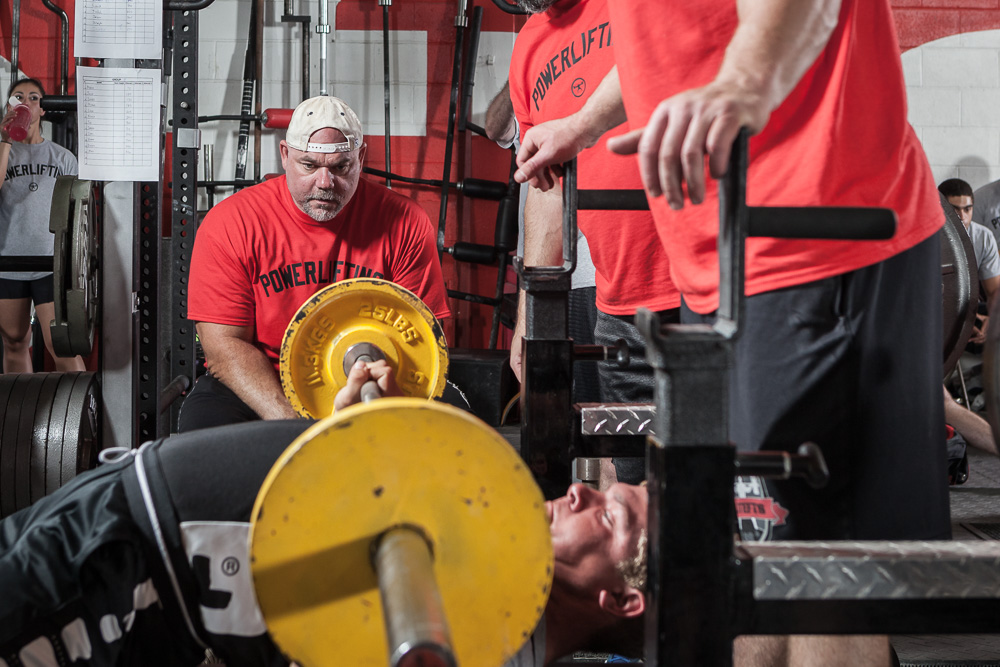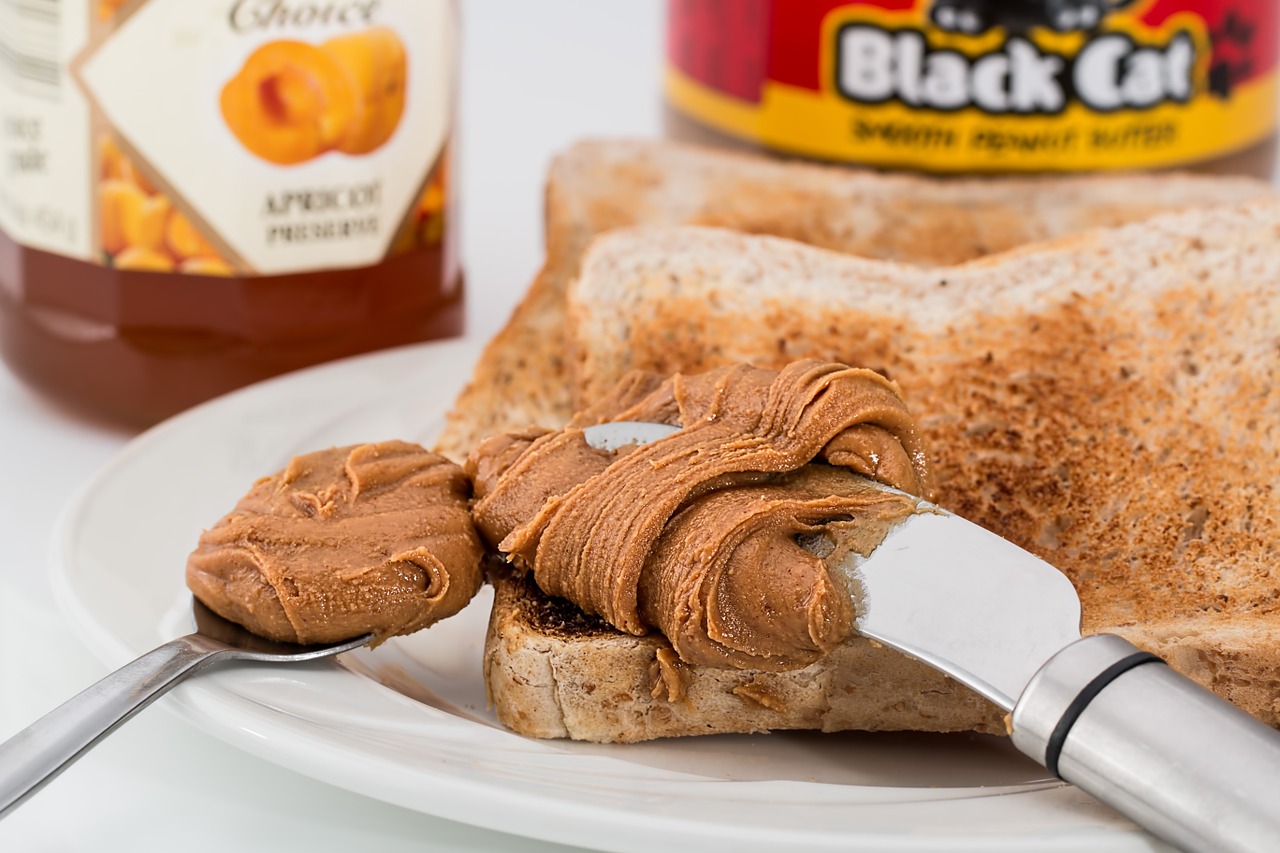
In my column over the last few years, particularly last year, I've delved into disseminating the truth behind many training, nutrition and industry trends, often accompanied by pseudo-scientific ridiculousness that has little scientific support or even practical rationale. Sadly, training and nutrition myths proliferate the lives of nearly every person who trains either recreationally or competitively. Despite what dubious testimonials, books, media, consumer outlets, "TV" doctors, Dr. Oz or any other celebrity personality say, some of them are totally ridiculous and some of them have, like anything else, a grain of truth.
The Research Meathead has come to your rescue. He has activated the “bullshit” meter and pulls no punches. We're working our way through some of the most heinous training and nutrition myths that continue to plague the industry and just won’t die. We're laying the smackdown with real truth and real science. Although this isn't an exhaustive list, it will help set the record straight. Welcome to Mythbusters!
Myth 101: You need to exercise, train and “sweat” out your toxins to get rid of toxic buildup in your body.
Truth: The shift from a legitimate medical usage to supplying exaggerated claims through power of suggestion, hyperbole, reliance on the emotional triggers of zealous testimonials and celebrity endorsements has created erroneous behavior and false thinking by using a real term (detox) to provide legitimacy to inadequate products and services while confusing consumers into thinking that they’re evidence or science-based. There are three primary methods by which the disposal of toxins occurs through the body. Let’s break it down more simply.
- Liver: A major function of the liver is to metabolize, detoxify and inactivate both endogenous compounds and exogenous substances (37). The liver provides an important filtering mechanism for the circulation by removing foreign particulate matter, including bacteria, endotoxins, parasites and aging red blood cells (5, 37). The liver detoxifies harmful substances from a variety of sources such as burning sugars, fats, protein and/or other sources like medications, drugs, food additives, preservatives, food colorings, sweeteners, flavor enhancers, chemicals used in agriculture, alcohols, fumes, air pollution and many other factors.
- Kidneys: Similar to the liver, the kidneys also assist in the disposal of toxins. The kidney contains many small yet crucial structures called glomeruli, which filter foreign substances (such as toxins and waste products) out of the blood where they become concentrated into the urine, resulting in excretion. Some toxins don't get filtered out by the glomeruli and are instead actively secreted by the kidneys into the urine. Nonetheless, the kidneys ability to secrete waste products and toxins into the urine is one of the primary ways in which toxins are eliminated from the body (8, 37).
- Sweat: Regardless of what anybody tells you (including charlatan television personalities), you can't “sweat out” toxins or “cleanse your system” through sweating. Although skin is classified as a major organ, it isn't connected to other major systems of the body.
Myth 102: The term “lactic acid” causes acidosis, creates fatigue and is a “bad thing” during training.
Truth: There isn't any doubt that this is one of the most prevailing myths that continues to exist within the world of exercise and training. First, there isn't any such thing as “lactic acid.” There is only lactate. Lactate production is really a consequence of cellular acidosis, not the cause of the acidosis. This is the point where misinterpretation originates and numerous educators and researchers still consider that lactate production is the cause of acidosis.
MORE Muscle Confusion Debunked
To put it more simply, lactate production actually retards acidosis and acts as a provisional ‘neutralizer’ or ‘buffer’ to the cells' increased accumulation of protons during high intensity training. Considering these physiological events, lactate production is actually a good thing and not detrimental for contracting muscle. In actuality, it has been falsely blamed for the cause of acidosis.
An increase in acidosis can accumulate rapidly (depending on the type of training). As a result, a number of issues occur that can significantly lower your performance and interfere with everything inside and outside of the muscle. Due to the loss of performance, muscles lose their ability to contract effectively, and muscle force production and exercise intensity ultimately cease. Although lactate production does not cause acidosis, it accompanies the acidosis and acts as a defense mechanism for the body. In addition, lactate has also been falsely accused of causing fatigue in the muscles during training. It has been shown that fatigue is a highly complex phenomenon resulting from a combination of impairments throughout the human neuromuscular system, including gender differences (12, 28, 41), and has nothing to do with lactate. Further, a continued belief is that “lactic acid” buildup in the muscle causes muscle soreness. This is probably the worst and dumbest statement that anybody could ever make. It’s called delayed onset muscle soreness (DOMS), people, and it has never been or ever will be directly related to lactate.
Myth 103: You need to eat six meals a day and eat every three hours to boost your metabolism.
Truth: Look, people, competitive strength athletes eat over 5,000 calories a day, and if you’re Michael Phelps, it helps to visit the Chinese buffet as well (like most of us have). Most athletes won't have three meals of 1,500 calories each (well, maybe some of us). The basic premise of this myth was derived essentially out of a misunderstanding of the thermic effect of food (also termed dietary induced thermogenesis, or DIT, which describes the calories burned during the processing of the food you eat). Increased meal frequency is often promoted as a beneficial strategy for reducing fat mass because frequent meals enhance fat loss and help to achieve better weight maintenance (20). Further, observation data supports an inverse relationship between the frequency of eating and adiposity (21), better appetite control (31–33), improved glucose control (3, 14), an increase in the thermic effect of food (19) and, more recently, anabolism (2, 22).
According to a recent meta analysis (30), the majority of studies on the topic have failed to show a positive relationship between meal frequency and energy expenditure. The overwhelming majority of studies (not all) analyzed for the meta-analysis were conducted using a sedentary population, which may not extrapolate well to athletes or those involved in structured, vigorous training. In addition, nearly all the studies on this topic to date used low to moderate amounts of protein, except for a recent study by Arciero (1) that did show significant improvements in body composition when an energy-equated, high protein diet (approximately 34 percent of total calories) was consumed in six versus three daily meals.
To get to the heart of the matter, smaller, more frequent meals don't speed up metabolism compared to the same total calories and macros consumed in larger, less frequent meals. Objective research has shown this repeatedly in tightly controlled, opinion-free conditions (35, 36). Smaller, more frequent meals aren't reliably more effective than larger, less frequent meals when it comes to controlling appetite and blood sugar (23). However, before you start with all the “hate mail,” these overall findings are highly dependent on overall total calories consumed, training status, volume of training, intensity, frequency of training and other factors. If you eat frequency meals because you consume a large amount of calories, particularly for adding muscle mass, by all means continue to do what works for you.
Myth 104: Overtraining is a myth.
Truth: One of the many questions that continues to purvey among strength and conditioning and fitness professionals is the view of the existence of overtraining. Specifically, does it exist? Many may argue that overtraining doesn't exist or that ‘true’ overtraining is very difficult to achieve.
While the literature on overtraining has increased significantly in recent years (16, 27, 40) and the prevalence of overtraining varies considerably among a variety of sports (40), the overall occurrence of actual overtraining seen in normal, day-to-day, resistance-trained individuals is very low. Given the amount of literature, overtraining is very real. However, the overwhelming majority of those who “think” they are overtrained are really “overreached” or lack recovery. Strategic training can also incorporate “planned overreaching.” The responses to overtraining are almost always characteristic of fatigue, stress and exhaustion. However, more importantly, you can induce fatigue and overtraining, and common, normal loads for an athlete often can result in overtraining. It is uncertain the extent to which specific training loads are a precursor to overtraining.
Myth 105: Higher protein diets put more strain on the kidneys.
Truth: The bullshit meter is on hyper drive with this! This is likely the number one nutrition myth invading your household, infiltrating your children’s playground and acting as a corrosive material like hydrofluoric acid (Breaking Bad anyone?). Many people have stated that high protein diets over the recommended daily allowance (RDA) could be bad for your kidneys. There are even outdated sections of textbooks and research articles published on this very topic. The original research does show that people who eat protein and have preexisting/existing kidney issues will put more strain on their kidneys. It’s true that if you consume more protein and you measure kidney work, it will increase, but the increase is seen with an increased glomerular filtration rate (GFR), as it is a measure of how hard your kidneys are working. Before you “freak out,” there isn't any “damage” because high protein intakes have been shown to enhance greater bone density, greater muscle mass, greater strength and recovery (6, 10, 15, 17, 34).
Photo credit: https://uk.ryderwear.com/
Myth 106: Doing cardio makes you fat.
Truth: I’m not sure why “cardio’ has been outlawed by so many in the training world recently. When did cardio all of a sudden become “badmouthed ”by a few highly vocal people in the industry? Do you know how many scientific studies have been done on measuring body fat? A simple search on PubMed cross referencing ‘aerobic’ with ‘body composition’ displayed over 500 publications and that barely touches resistance training. Further, which version of “cardio" are you incorporating? Are you discussing high intensity steady state cardio, interval training, sprints, jump rope, the Prowler or sled drags? High intensity interval training (HIIT) shouldn't be in the same category as “cardio.” Are you doing cardio for conditioning and endurance or for a physique or bodybuilding show? Those approaches are vastly different. Let’s touch on this and highlight some interesting science.
Going back to the 1980s, 12 weeks of doing aerobic dance training (three days per week for 45 minutes) resulted in significant increases in lean body mass and body density coupled with decreases in the percentage of body fat and the sum of four skin-fold thicknesses (39). Recently, researchers put 28 obese children (16 boys and 12 girls ages 12–14 years) into an exercise group or control group. The exercise group participated in a 16-week aerobic exercise program (four, 60-minute sessions per week at 70–85 percent of the heart rate max) in addition to the school’s own physical education. The kids who participated in aerobic exercise not only yielded a smaller waistline, but they also showed a significant drop in fat mass (26).
RELATED The FatBusters Analyze Dietary Trends
Another recent study determined the effect of aerobic exercise, without energy restriction, on weight loss in sedentary overweight and obese men and women. Subjects were randomized into a 400 calorie/session, a 600 calorie/session or a non-exercise control. Exercise was supervised five days a week for 10 months. Isn’t it awesome that we have science to dispel witchcraft? They found that “significant changes in percent body fat over 10 months were observed in both the 400 (-2.9 percent) and 600 (-4.4 percent) kcal/session groups. Percent fat was unchanged in the control group (-0.6 percent). The reductions in body weight observed in both exercise groups were a result of decreased fat mass and preservation or increase in fat-free mass.” (7). Holy shit! I can’t believe it! The group who did more aerobic exercise actually lost body weight and fat? Say it isn’t so?
It has been known for quite some time that too much cardio may promote a loss of lean body mass, especially for those wanting more muscle mass. But listen, people, that isn't the same as saying ‘cardio makes you fat.’ What about interval training? High-intensity interval training (HIIT) has proven to be a superior method for maximizing fat loss compared with moderate intensity steady state training (9, 13). Comparatively, HIIT increases the body’s potential to use lipids as an energy substrate to a greater extent than steady state aerobic exercise with an increased upregulation of enzymes responsible for beta oxidation. The supportive science discussed here, with respect to aerobic exercise and HIIT, is just the tip of the iceberg, so hopefully you get the idea. However, science aside, when it comes to aesthetics and performance, it’s probably best to lay off the running and treadmill work and do more heavy strength training and interval work.
Myth 107: Eating fat makes you fat.
Truth: The reality is that fat doesn't make you fat, lazy, slow, weak, diabetic or sloth-like. It actually helps. For example, in terms of fat loss, studies consistently show that diets that are high in fat (but low in carbs) lead to significant more weight loss compared with low fat diets (11, 29, 38). Toward the fat loss aim, displacing carbohydrates by increasing fat creates an optimal fat loss environment because insulin is kept low, aiding in fat usage for energy provisions during training (although a whole different topic). From a physiological and biochemical view, low fat diets make little sense. Lower fat diets can also have negative impacts on adipokines (hormones released specifically from your fat cells), which affect fat loss. Low carb, high fat diets also lead to all sorts of other benefits including increased HDL cholesterol, lower triglycerides, lower blood sugar and insulin levels, more abdominal fat loss and improved size of LDL particles (4, 18).
Myth 108: You need to get sore for continued training and adaptation.
Truth: This is probably one of those uncommon myths compared to many others, but it still deserves to be addressed. Many trainees mistakenly assume that if they fail to get sore in the subsequent days following a training session, the workout was unproductive and inferior. Wrong! If you simply wish to get sore, either train infrequently or perform exercises under stress with heavier loads like eccentric training. I know that it might be a shock, but it’s actually called delayed onset muscle soreness (DOMS). This is the product of inflammation caused by microscopic tears in the connective tissue elements that heighten the sensation of pain (25).
DOMS is typically characterized as muscle soreness and swelling that becomes evident eight to 10 hours after exercise and peaks between 24 and 48 hours. It should be noted, however, that “tenderness” rather than soreness might be a more appropriate word to use with clients when describing the effects of DOMS. Further, studies show that soreness, as reported on a visual analog scale, is poorly correlated with both the time course and the magnitude of accepted markers of muscle damage from training, including maximal isometric strength, range of motion, upper arm circumference and plasma creatine kinase levels (24). However, although DOMS may provide a general indication that some degree of damage has occurred, it can't be used as a definitive measure to indicate validity and productivity of your training sessions.
References
- Arciero PJ, Ormsbee MJ, Gentile CL, Nindl BC, Brestoff JR, Ruby M (2013) Increased protein intake and meal frequency reduces abdominal fat during energy balance and energy deficit. Obesity 21:1357–66.
- Areta JL, Burke LM, Ross ML, Camera DM, West DW, Broad EM, Jeacocke NA, Moore DR, Stellingwerff T, Phillips SM, Hawley JA, Coffey VG (2013) Timing and distribution of protein ingestion during prolonged recovery from resistance exercise alters myofibrillar protein synthesis. J Physiol 591:2319–31.
- Bertelsen J, Christiansen C, Thomsen C, Poulsen PL, Vestergaard S, Steinov A, Rasmussen LH, Rasmussen O, Hermansen K (1993) Effect of meal frequency on blood glucose, insulin, and free fatty acids in NIDDM subjects. Diabetes Care 16:4–7.
- Brinkworth GD, Noakes M, Buckley JD, Keogh JB, Clifton PM (2009) Long-term effects of a very-low-carbohydrate weight loss diet compared with an isocaloric low-fat diet after 12 mo. Am J Clin Nutr 90:23–32.
- Brooks G, Fahey Baldwin (2005) Exercise Physiology: Human Bioenergestics and Its Application.
- Churchward-Venne TA, Burd NA, Phillips SM (2012). Nutritional regulation of muscle protein synthesis with resistance exercise: strategies to enhance anabolism. Nutr Metab (Lond) 9:40.
- Donnelly JE, Honas JJ, Smith BK, Mayo MS, Gibson CA, Sullivan DK, Lee J, Herrmann SD, Lambourne K, Washburn RA (2013) Aerobic exercise alone results in clinically significant weight loss for men and women: Midwest exercise trial 2. Obesity 21:E219–28.
- Farrell J, Caiozzo (2012) ACSM's Advanced Exercise Physiology. 2nd ed. Lippincott Williams & Wilkins.
- Gibala MJ, Little JP, van Essen M, Wilkin GP, Burgomaster KA, Safdar A, Raha S, Tarnopolsky MA (2006) Short-term sprint interval versus traditional endurance training: similar initial adaptations in human skeletal muscle and exercise performance. J Physiol 575:901–11.
- Heaney RP, Layman DK (20080 Amount and type of protein influences bone health. Am J Clin Nutr 87:1567S–1570S.
- Hession M, Rolland C, Kulkarni U, Wise A, Broom J (2009) Systematic review of randomized controlled trials of low-carbohydrate vs. low-fat/low-calorie diets in the management of obesity and its comorbidities. Obesity reviews: An official journal of the International Association for the Study of Obesity 10:36–50.
- Hicks AL, Kent-Braun J, Ditor DS (2001) Sex differences in human skeletal muscle fatigue. Exerc Sport Sci Rev 29:109–12.
- J SBD (2009) High-intensity interval training: Applications for general fitness training. Strength Cond J 27(5):78–85.
- Jenkins DJ, Ocana A, Jenkins AL, Wolever TM, Vuksan V, Katzman L, Hollands M, Greenberg G, Corey P, Patten R (1992) Metabolic advantages of spreading the nutrient load: effects of increased meal frequency in non-insulin-dependent diabetes. Am J Clin Nutr 55:461–7.
- Josse AR, Tang JE, Tarnopolsky MA, Phillips SM (2010) Body composition and strength changes in women with milk and resistance exercise. Med Sci Sports Exerc 42:1122–30.
- Kellmann M (2010) Preventing overtraining in athletes in high-intensity sports and stress/recovery monitoring. Scand J Med Sci Sports 20(S2):95–102.
- Kerksick CM, Rasmussen CJ, Lancaster SL, Magu B, Smith P, Melton C, Greenwood M, Almada AL, Earnest CP, Kreider RB (2006) The effects of protein and amino acid supplementation on performance and training adaptations during ten weeks of resistance training. J Strength Cond Res 20:643–53.
- Krebs NF, Gao D, Gralla J, Collins JS, Johnson SL (2010) Efficacy and safety of a high protein, low carbohydrate diet for weight loss in severely obese adolescents. J Pediatr 157:252–8.
- LeBlanc J, Mercier I, Nadeau A (1993) Components of postprandial thermogenesis in relation to meal frequency in humans. Can J Physiol Pharmacol 71:879–83.
- Louis-Sylvestre J, Lluch A, Neant F, Blundell JE (2003) Highlighting the positive impact of increasing feeding frequency on metabolism and weight management. Forum of Nutrition 56:126–8.
- Ma Y, Bertone ER, Stanek EJ, Reed GW, Hebert JR, Cohen NL, Merriam PA, Ockene IS (2003) Association between eating patterns and obesity in a free-living US adult population. American Journal of Epidemiology 158:85–92.
- Moore DR, Areta J, Coffey VG, Stellingwerff T, Phillips SM, Burke LM, Cleroux M, Godin JP, Hawley JA (2012) Daytime pattern of post-exercise protein intake affects whole-body protein turnover in resistance-trained males. Nutr Metab (Lond) 9:91.
- Munsters MJ, Saris WH (2012) Effects of meal frequency on metabolic profiles and substrate partitioning in lean healthy males. PLoS One 7:E38632.
- Nosaka K, Newton M, Sacco P (2002) Delayed-onset muscle soreness does not reflect the magnitude of eccentric exercise-induced muscle damage. Scand J Med Sci Sports 12:337–46.
- Proske U, Morgan DL (2001) Muscle damage from eccentric exercise: mechanism, mechanical signs, adaptation and clinical applications. J Physiol 537:333–45.
- Regaieg S, Charfi N, Kamoun M, Ghroubi S, Rebai H, Elleuch H, Feki MM, Abid M (2013) The effects of an exercise training program on body composition and aerobic capacity parameters in Tunisian obese children. Indian J Endocrinol Metab 17:1040–45.
- Richardson SO AM, Morris T (2008) Overtraining Athletes. Champaign, IL: Human Kinetics.
- Russ DW, Kent-Braun JA (2003) Sex differences in human skeletal muscle fatigue are eliminated under ischemic conditions. J Appl Physiol (1985) 94:2414–22.
- Santos FL, Esteves SS, da Costa Pereira A, Yancy WS, Jr., Nunes JP (2012) Systematic review and meta-analysis of clinical trials of the effects of low carbohydrate diets on cardiovascular risk factors. Obesity reviews: An official journal of the International Association for the Study of Obesity 13:1048–66.
- Schoenfeld B, Krieger JW (2015) Effects of meal frequency on weight loss and body composition: A meta-analysis. Nutrition Reviews 14:69–82.
- Smeets AJ, Westerterp-Plantenga MS (2008) Acute effects on metabolism and appetite profile of one meal difference in the lower range of meal frequency. Br J Nutr 99:1316–21.
- Speechly DP, Buffenstein R (1999) Greater appetite control associated with an increased frequency of eating in lean males. Appetite 33:285–97.
- Speechly DP, Rogers GG, Buffenstein R (1999) Acute appetite reduction associated with an increased frequency of eating in obese males. International journal of obesity and related metabolic disorders: Journal of the International Association for the Study of Obesity 23:1151–9.
- Tang JE, Phillips SM (2009) Maximizing muscle protein anabolism: The role of protein quality. Curr Opin Clin Nutr Metab Care 12:66–71.
- Taylor MA, Garrow JS (2001) Compared with nibbling, neither gorging nor a morning fast affect short-term energy balance in obese patients in a chamber calorimeter. International journal of obesity and related metabolic disorders: Journal of the International Association for the Study of Obesity 25:519–28.
- Verboeket-van de Venne WP, Westerterp KR (1991) Influence of the feeding frequency on nutrient utilization in man: consequences for energy metabolism. Eur J Clin Nutr 45:161–9.
- Walter B (2011) Medical Physiology. 2nd Edition updated. Saunders.
- Westman EC, Feinman RD, Mavropoulos JC, Vernon MC, Volek JS, Wortman JA, Yancy WS, Phinney SD (2007). Low-carbohydrate nutrition and metabolism. Am J Clin Nutr 86:276–84.
- Williams LD, Morton AR (1986) Changes in selected cardiorespiratory responses to exercise and in body composition following a 12-week aerobic dance program. J Sports Sci 4:189–99.
- Winsley R, Matos N (2011) Overtraining and elite young athletes. Med Sport Sci 56:97–105.
- Wust RC, Morse CI, de Haan A, Jones DA, Degens H (2008) Sex differences in contractile properties and fatigue resistance of human skeletal muscle. Exp Physiol 93:843–50.
















http://www.lactic-acid.com/index.html
Lactic Acid and Lactate
Lactic acid is a weak acid, which means that it only partially dissociates in water. Lactic acid dissociates in water resulting in ion lactate and H+. This is a reversible reaction and the equilibrium is represented below.
CH3CH(OH)CO2H H+ + CH3CH(OH)CO2-Ka= 1.38 x 10-4
Depending on the environmental pH, weak acids such as lactic acid are either present as the acid in its undissociated form at low pH or as the ion salt at higher pH. The pH at which 50% of the acid is dissociated is called the pKa, which for lactic acid is 3.86.
Under physiological circumstances the pH is generally higher than the pKa, so the majority of lactic acid in the body will be dissociated and present as lactate. In the undissociated (unionized) form the substrates are able to pass through the lipid membranes, unlike the dissociated (ionized) form which cannot.
Created by Corbion Purac: the leading supplier of lactic acid, derivatives and lactides|terms and conditions
http://www.elitefts.com/education/misconceptions-about-lactic-acid/
Further, I would encourage you to look at reference #18 from the link above (from a former faculty member here at UNM) which is one of the most cited and premier papers on this topic in the last 11 years.
From the article link I shared, i mention that lactic acid and lactate are used synonymously. However, they aren't the same compounds. By definition, an acid can release a proton for pH conditions less than 7.0. Therefore, when lactic acid releases a hydrogen ion, the remaining compound (which is negatively charged) links with a positively charged ion (i.e. sodium [Na+]) to form an acid salt (i.e. sodium lactate. Lactic acid isn't produced in the body, but rather lactate is the product of a side reaction in glycolysis (from reference 18). Lastly, and perhaps I wasn't as specific, but lactic acid is a naturally-occurring molecule present in a variety of food products. It has and continues to be used to assist in the acidity of an assortment of foods and beverages, serving as a food preservative. I am merely talking about the performance side in both of my articles. Hopefully the article link I provided will help you understand thing better.